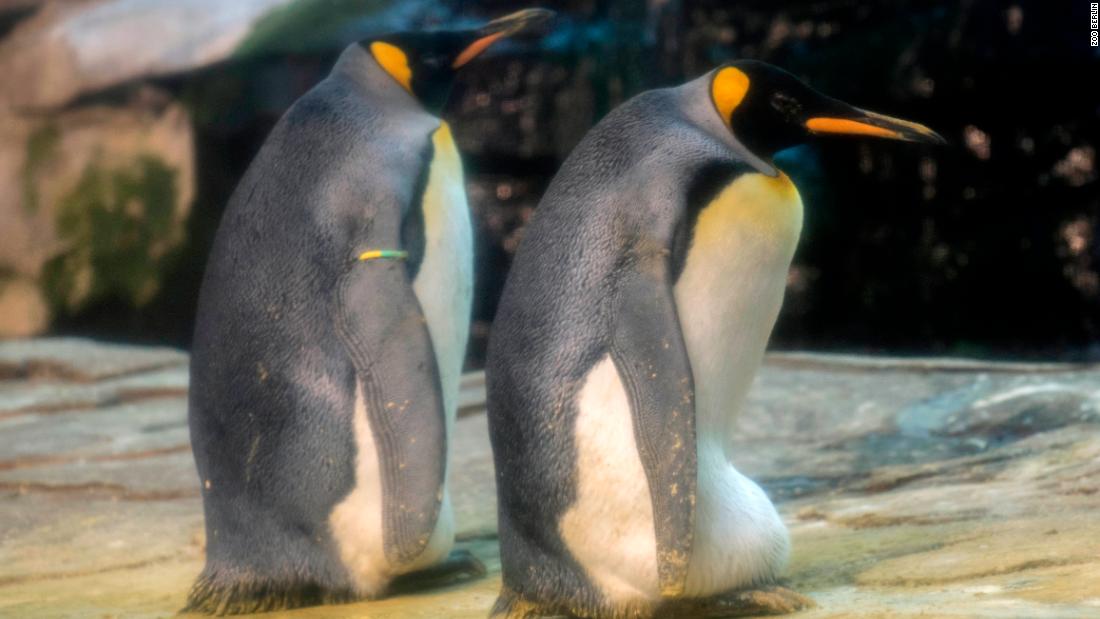[ad_1]
Zoo Berlin officials announced that two of its male king penguins, Skipper and Ping, have eagerly adopted an egg. It’ll be the pair’s first chick, if all goes well.
The couple arrived together from a zoo in Hamburg in April, and their bond was evident as soon as they arrived, zoo spokesman Maximilian Jäger said.
In July, keepers decided to give Skipper and Ping a real crack at parenthood. One of the zoo’s female king penguins laid an egg, but because she had never hatched her previous eggs, staff members decided to donate it to the pair, he said.
Though staff members are thrilled for the prospective parents, Jäger said they’re celebrating the news by “giving them as much calm as possible,” essential for a successful hatch.
Other notable gay penguin pairs
Jäger said the zoo’s seen plenty of same-sex penguin couples, and now, Skipper and Ping might join a storied lineup of gay penguin parents.
Hundreds of animals partner up with members of their sex
Animal behaviorists are split on exactly why animals couple up with members of their sex when there’s no reproductive potential.
Sure, some animals might not be able to discern a male from a female, but often, animals pair up because they’re seeking a strong bond and a co-parent, researchers said in the review.
Like humans, many species engage in “non-reproductive sexual behavior.” And if there are more females than males in a group, same-sex partnerships are more than likely, according to the study.
For penguins, monogamy of any sort is convenient and necessary: One partner can hatch the chick while the other forages for food. Plus, huddling with a loved one can make the Antarctic cold a bit more bearable.
So here’s to Skipper and Ping; may the two embrace parenthood as openly as they’ve embraced each other.
[ad_2]
Source link

